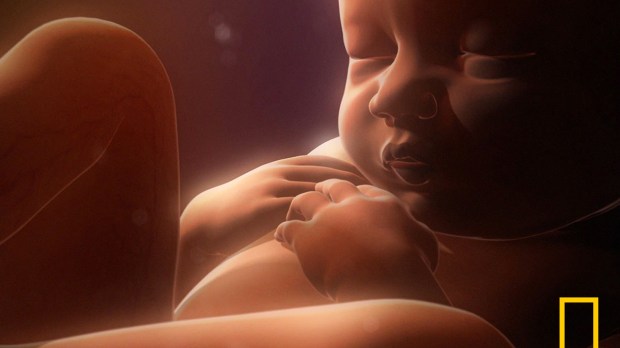“In the Womb,” the first of a seven-part series by National Geographic, is now available in its entirety on YouTube (embedded above). This documentary examines human development from conception to birth, and is a beautiful, illuminating, and objective portrait of the delicacy and intricacy of life in its earliest stages.
In fact, it’s hard to believe that “In the Womb” was made over a decade ago. This feels cutting edge even today, because the up-close, tangible view of unborn children afforded by science is routinely abstracted from debates about how to treat them. With the exception of a few poetic asides from Roger McGough, “In the Womb” doesn’t wade into political, religious, legal, or philosophical debates. Instead, it engages in one simple but fascinating question: what can we clearly observe about life in the womb? What do we know scientifically about what unfolds during pregnancy?
Quite a lot, as it turns out, and more and more as science advances. Below is just a handful of the mind-blowing discoveries from this film:
- A woman’s egg is fertilized within hours of intercourse, and immediately a genetically distinct organism is formed. The unique genetic code, which contains 23 chromosomes from each parent (each of which contains over 2 meters of DNA), contains the blueprint for this life, including its species, sex, appearance, character, and even vulnerability to certain diseases.
- About a day after fertilization, the egg makes its first division, and grows to around 100 cells by 4 or 5 days.
- At day 15, nerve cells begin to form and flicker in the brain and in the spinal column. The embryo starts to take definable shape just a week later, folding in on itself to form a long tube, the top of which will become the unborn child’s head.
- After 22 days, the heart suddenly bursts into life when still just the size of a poppy seed. One cell spontaneously contracts, triggering a reaction that leads to all the heart cells beating together.
- After 4 weeks, the embryo is as big as a kidney bean, growing by about 1 millimeter every day as the heart pumps nutrients around the body.
- After 8 weeks, the unborn child is receiving nutrients and filtering out harmful substances through a mature placenta. The placenta also releases hormones preventing the mother from releasing more eggs and stopping her immune system from rejecting the new life rapidly growing inside.
- New scientific advancements, like 3D and 4D scans (which the film likens to the Hubble telescope), provide a new and illuminating “window on the womb” – and as early as 8 weeks.
- At 10 and 11 weeks, she can be seen kicking her legs against the base of the uterus in what’s known as the stepping reflex, an inchoate rehearsal of walking.
- At 16 weeks, she is much more mobile and begins to develop proprioception – an unconscious sense of the space around the body.
- As early as 18 weeks, some unborn children open their eyes, exhibiting the first sign of the blinking reflex.
- At 24 weeks, it is possible for her to survive outside of the womb. (Since the release of “In the Womb,” new studies suggest that viability may be moving to as early as 22 weeks.)
- Around the same time, the unborn child’s senses flicker into life. Eyes, ears, nose, taste buds, and nerves responding to touch are all maturing. She can hear noises, conversations, low notes of music, and especially the sound of her mother’s voice, which travels directly through the fluids of body.
- Toward the end of the second trimester, her sense of touch is so advanced that she’ll react if prodded through the mother’s belly and even has the capacity to feel pain.
And that’s just the first two trimesters!
This is the amazing scientific truth of how and when human life begins. It may not lead us directly to any one conclusion on the philosophical question of personhood, but (because “truth cannot contradict truth”) serves as an important sign of the inviolable dignity of the unborn. Defending life is often understood as a narrow religious imperative; but in the more holistic view so many embrace and live by, there is compassion and understanding for both mother and child, respect for the dignity of life in all ages and stages, and an attentiveness to what science teaches us.
As McGough puts it in the film, it can remind us that every fragile human being that embarks on this incredible journey is “a mystery, a miracle…a gift to the world.”

